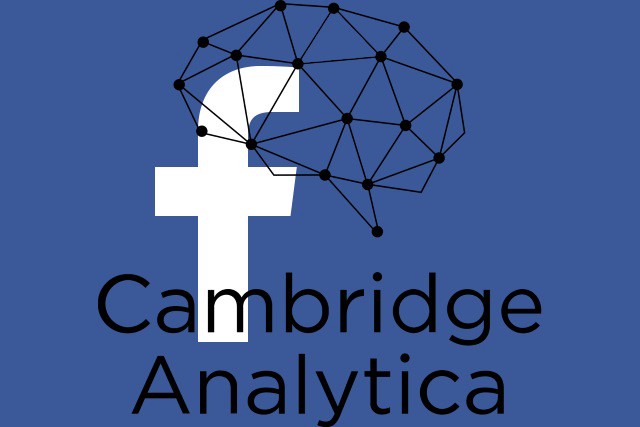What can non-profits learn from social media targeting done by the Obama 2012 Campaign?
We’ve all been there when designing a social media strategy – post something on Facebook or Twitter and see what happens. Oftentimes, this leads to more questions than answers: Who sees the post? Who gets influenced by it? Am I getting the audience I want? Am I extending my audience or am I hitting the same people over and over? How do I target my social media content and get it front on the right people? And how do I acquire new supporters, especially millenials? How much is a fan worth? (If you’re really wondering, the answer is it ranges from nothing to not much) How do I convert a fan into something useful? How do I figure out how to do that?
Last year, while working for the Obama Campaign, we were struggling with some of the same issues. In this post, we describe our specific challenges, our solution, and what this might mean for other organizations.
What was the problem we were facing?
Political campaigns today use multiple channels to communicate with different kinds of audiences. When it came to more traditional forms of campaigning, we (the Obama 2012 Campaign) had our strategy down – build predictive targeting models and then use them to generate lists for our volunteers making calls and knocking on doors. The models we built were extremely effective in identifying the right people to target, but the challenge was in reaching these people. Our primary channels (at least initially) were the more traditional ones (phone calls, door knocks, direct mail, and TV ads); however, those channels were ineffective when it came to reaching a key demographic – younger people. Our contact rate for people under 30 was lower than any other group. We didn’t have phone numbers for most of them, and were often unsuccessful in contacting the ones for whom we did have information.
We knew that all these younger people were most likely spending time on Facebook, but they weren’t necessarily connected to us in any meaningful way. While we did have 25 million Facebook fans, they weren’t all necessarily helpful to the campaign (the top city of those fans was Jakarta). What really mattered was what actions we could influence our fans to take, such as helping us reach unregistered or persuadable voters.
The rich social network of Facebook seemed like an obvious channel to use but it wasn’t obvious how we would do that. In general, Facebook posts are almost impossible to target. We could post as many things on our Facebook page as we wanted, but couldn’t direct them to specific segments of voters. Based on their ranking algorithms, Facebook decides where and how often a given post appears on someone’s news feed. Thus, a Facebook post on our page would reach some number of people – we didn’t exactly know what kind of people – and definitely not people we’d be trying to persuade (since they most likely wouldn’t be fans in the first place).
These challenges – a lack of getting younger people engaged and the lack of targeting ability on Facebook with the criteria we cared about – gave rise to a tool we built that came to be known as Targeted Sharing.
What is Targeted Sharing?
In the campaign, we learned that the best people to persuade someone we wanted to support us were people just like them – their friends, neighbors, and family members. Furthermore, often the best advocates for an organization are its existing supporters. Targeted Sharing applies these dynamics to the digital world using the Facebook “social graph” and machine learning (fancy words to say advanced math, statistics, and data analysis) to turn supporters into data-driven advocates.
Here’s what we do – We get supporters to authorize our Facebook app and ask for permission to scan their Facebook friend list and related social graph data. We go through this data and hundreds or thousands of their friends, run a variety of algorithms and predictive models to find the handful who are likely to become supporters when asked by this individual supporter. We then present this list of friends to the supporter, asking them to share content with them, likely resulting in conversion/action back from the shared friends
Targeted Sharing makes it easier for these supporters to focus their efforts on the people who are most likely to 1) be good candidates for what they’re being asked to do (donate, volunteer, register, vote, etc.) and 2) mostly likely to get influenced to take a some action when asked by that specific supporter.
How did Targeted Sharing work in the campaign?
We released this tool for the Obama Campaign in August 2012. Over the next 3 months, we had over a million supporters authorize our app, giving us potential access to over 200 million unique people in their social network. For each campaign activity (persuasion, volunteering, voter registration, get-out-the-vote), we ran predictive models on this friend network to determine who to target. We then constructed an “influence graph” that matched existing supporters with potential targets. For each supporter, we provided a customized list of key friends with whom to share different types of content.
Targeted Sharing was particularly effective because our goal wasn’t to get our message out to as many people as possible, but to target more precisely and get the right message to the right people at the right time. For instance, the people who we wanted to persuade to support our candidate were different than the people we wanted to remind to go to vote (the assumption being that the latter group were already supporters). If we had just asked our existing supporters to share something on their Facebook walls, we wouldn’t have been able to target those messages to the right people. In addition, it’s likely that those messages would’ve been shown to people just like them, living in states that already supported us (NY, CA, IL, etc.). Using Targeted Sharing, we were able to precisely target messages not only to the right audience (persuadable voters in specific swing states, for example) but also find the right advocate/messenger to send that message.
For more information about the use of Targeted Sharing in the campaign, see the writeups in TechPresident, GigaOm, and Time Magazine.
What did we learn?
We found that for an organization, using your existing supporters in this manner to acquire and engage new supporters is a very effective strategy. Specifically:
- Targeted Sharing was an effective technology to get our supporters to share content with the right audience. We got fairly high sharing and conversion rates – 50% of users who saw friend suggestions shared with an average of 10-15 friends. 15% of those friends clicked back on content they were shared by their friends.
- “Intelligent” sharing suggestions (based on our predictive influence models) have a higher chance of getting supporters to share content than random suggestions. Based on our experiments, we found that supporters are 15-20% more likely to share content if the suggested friends are based on smart predictive models of influence.
- The clickback/conversion rates from people who received content from friends predicted as “influential” by our model were 5x higher than those suggested randomly. Clearly, it matters who asks you to do something.
- Intelligent Targeting using influence models gets the right message to more of the right people. Compared to untargeted messages aka wall posts, we were able to get our message out to 5 times as many people in the target audience.
- Personalization works! When asking people to share with specific people (Jim, Tony, and Lisa with their Facebook profile photos in the ask) compared to generic “Share with your friends on Facebook”, response rates were 4 times higher!
- Incentives are a good thing. Offering people small incentives (free bumper sticker for example) drove much higher sharing and Facebook authorization rates.
How can non-profits, charities, advocacy groups use this tool?
We are data and analytics geeks who are about making the world a better place. After the Obama campaign, we realized that the same challenges that led us to develop Targeted Sharing for the campaign (difficulty engaging certain demographics and the inability to do effective targeting on social media) are being faced by a lot of non-profits, charities, and advocacy groups. That led us to decide to build Targeted Sharing as a product that we could offer social good organizations to help them fundraise, recruit and mobilize volunteers, and engage new audiences.
We now have an excellent team building the product and running pilots with a select group of clients. If you’re interested in being part of our pilot program, please contact us. We’ll also be launching publicly in a few months so sign up to get notified about our launch.
P.S. By the way, we should acknowledge that even though we are the ones describing this work and extending it at Edgeflip, this was only possible due to the efforts of a large number of people at the Obama Campaign who helped build this tool including (in alphabetical order) Joe Arasin, Chris Cote, Matthew Gipp, Mari Huertas, Sean Kealey, Michael Renehan, David Sebag, Sierra Slettvet, Will St Clair, Adam Stalker, and many others from the excellent analytics, digital, tech, and devops teams.




Leave A Comment